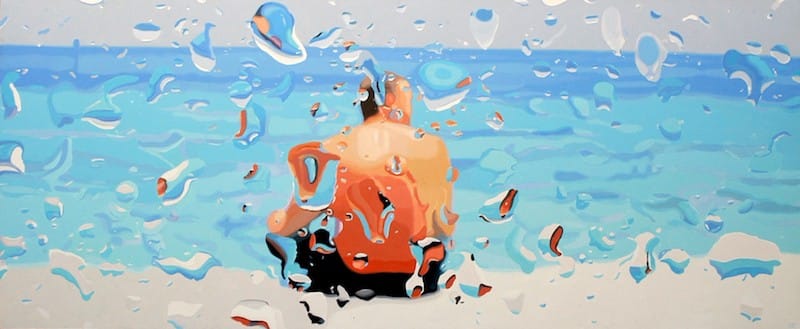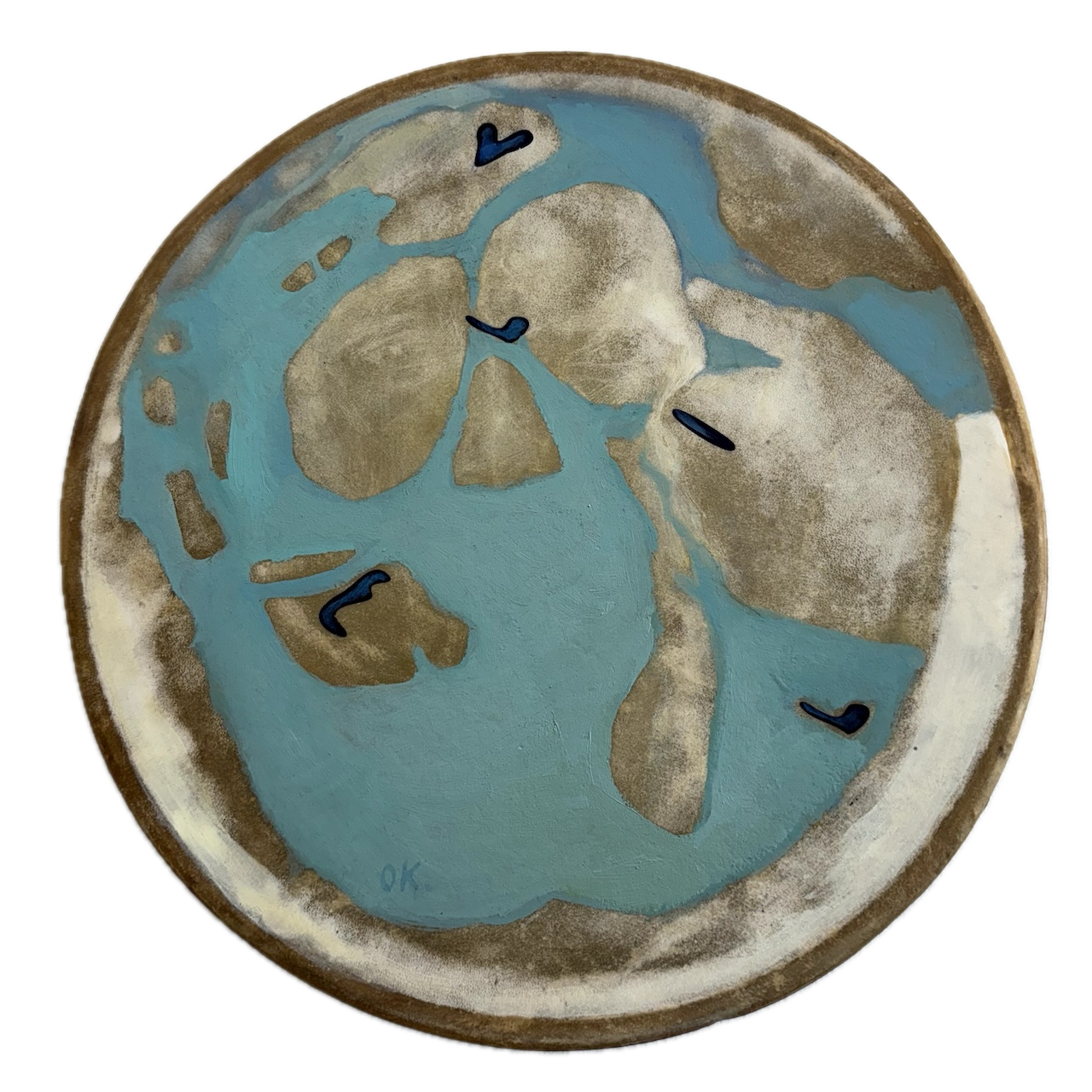Karen Ohanyan: Icons of the Future
Between the sky and the earth there is an eternal space where life begins and ends. Once it begins, it flows and feels like a blink of an eye, yet some blink more than once.
Between the blinks lie the moments that accumulate to form what we call an evolution. Karen Ohanyan and his body of work define the evolution of contemporary Armenian art and the steadfast progress the country is registering. Ohanyan sees form, style, and medium as tools to communicate the emotions and feelings that preoccupy him at a given moment. Without committing himself to a particular painterly tradition, granting himself the freedom to create what he wants and when he wants, Ohanyan’s work is entirely rooted in and informed by the human tradition of resilience and hope.
Born in 1981 in Yerevan, Armenia, Karen Ohanyan’s life evolved around the civil society struggles of his homeland. As a boy, Ohanyan experienced the consequences that followed the collapse of the Soviet Union in 1991, namely massacres, blockade, wars, and the cold-blooded murder of his compatriots by the ruling regime of Armenia during the March 1, 2008 protests in Yerevan. These are the struggles that crystallized the realities of post-Soviet Armenia and defined Ohanyan’s art during that period. While his painting evolved in terms of form, style, and medium, Ohanyan stayed true to his progressive spirit in his relation to both the arts and society. It is this revolutionary and evolutionary spirit that takes shape in the most recent paintings created outside of the borders of his homeland.
In a 2006 essay on Ohanyan’s Real Utopias series, art historian Vardan Azatyan writes: “The work of art is not an outcome of the artist’s spontaneous inspiration; it is produced in the complex relations between the artist and his/her reality. Thus, Karen’s pictures reveal the difficulties of making art and being an artist within the Armenian reality: these images are not only technically but also psychologically hard-won. Difficulties lie concealed in Karen’s works, just as the surface of the glass is hidden from the viewer. Their colorful and optimistic mood makes the viewer pass over the hardships of everyday life.”

So, what realities do these new abstract paintings reveal?
And what do they conceal?

In this profane world, ravaged by disasters, both man-made and natural, where genocides, mass-shootings, and extreme poverty form the reality of everyday life, Ohanyan no longer attempts to conceal anything. However, despite these harsh realities, he reveals the utopian hope of eternal peace that may be reached by both the connection between man and nature, and more importantly through one's connection to one’s own mind and body. Oil on parchment, stretched on a round wood frame, twenty circles (each 39 cm in diameter) — spread out on the wall as planets in the universe or continents on a map. Yet, they may be conceived as droplets as well, similar to those in the Real Utopias series (2005-2006). It is as if Ohanyan removes all barriers and zooms in into each individual droplet, thus revealing them to the collective world. Life is balanced and peaceful in these paintings, where light, clouds, sun, and sea reveal their secrets – they follow the tradition and adapt to new realities. Filled with gold, and hues of green and blue, they reference the painterly tradition of artists such as Turner, Ayvazovsky, Courbet, and Gorky, as well as Ohanyan’s own art of earlier periods. The paintings are virtually frameless, as the parts of the parchment stretched on the wood frame are entirely painted, thus turning the frame into an integral part of the painting. Ohanyan attempts to conceal the separation, giving it an illusion of unity at the expense of continuity. Yet the transparent parchment, a medium used by medieval Armenian miniature painters as Toros Roslin, allows light to flow freely and become a material all its own, literally and figuratively. In essence, it exposes the complex layers of the oil paint applied in gentle and light brush strokes, almost as the water caresses the skin with each arm-stroke, the paint caresses the parchment with each brushstroke. Water is an important element not only in Ohanyan’s life and art – he swims 2,500 meters each day – but also for his landlocked homeland. Yet, as access to water may be restricted to some, the sky belongs to everyone. Ohanyan’s paintings remove the divide and reinforce the dialectical truths of coexistence: mind and body, man and nature, life and death, enemy and friend, sky and sea.
In Ohanyan’s paintings the undefinable, the unknown, and the unpredictable take shape and gain understanding through the prism of hope. Pain felt on his own skin, time and time again, through the sheepskin, like a scapegoat in the shape of an eternal circle, with traces of the past and glimpses of the future, is revealed to us. In Ohanyan’s paintings the past and the future meet in the present. These paintings represent the present moment, the moment of major shifts, with no end and no beginning. After the “explosion of progress,” as Ohanyan calls it, new celestial worlds are created and even as infants they carry the memory of traditions and values that may guide them in the new, uncharted world. As Icons of the Future , and carrying with them the gravity of tradition and unavoidable “explosions of progress,” the “angels” are born to protect us. And just like truth cannot cheat itself, true to his own nature, Ohanyan’s paintings are undeniably positive, giving the viewer the strength that is needed to carry on, even in times of great disasters.
by Tamar Hovsepian